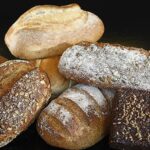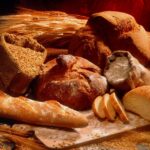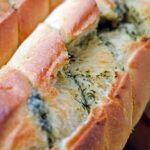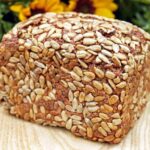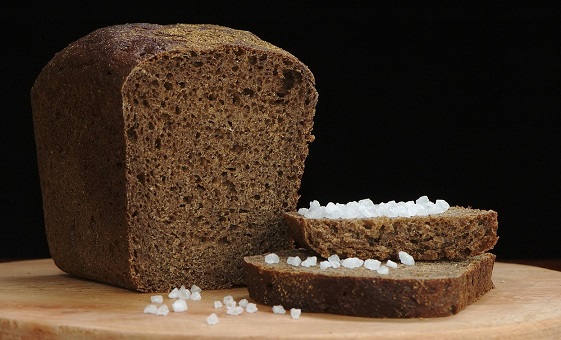
Pumpernickel is one of Germany’s most iconic and misunderstood breads. Dense, dark, and slightly sweet, it has been a staple in German cuisine for centuries. Originally from Westphalia, this slow-baked rye bread is famous for its unique taste and incredible shelf life. Though it may look intimidating, authentic Pumpernickel is surprisingly simple to make at home—with patience being the secret ingredient. In this guide, you’ll learn the origins of Pumpernickel, its cultural role, and how to recreate the classic loaf in your own kitchen.
The Origins of Pumpernickel
Pumpernickel originated in the Westphalia region of Germany around the 15th or 16th century. Back then, coarse rye flour was used to make a bread that could withstand time and travel. What makes traditional Pumpernickel special is its long, slow steam-baking process—up to 24 hours—which gives it its signature dark color and deep flavor without the use of molasses or caramel coloring.
This bread was once considered “poor man’s food,” but over time, it gained popularity across all social classes. Today, it’s enjoyed throughout Germany and abroad, often served with butter, smoked fish, cured meats, or cheese. Its hearty texture and slightly sweet, nutty flavor make it stand out among other rye breads.
Ingredients & Preparation
Ingredients for Authentic Pumpernickel
For the dough:
- 2½ cups (300g) coarse rye meal (or pumpernickel flour)
- 1 cup (100g) rye flour
- 1½ cups (350ml) warm water
- 1 tablespoon molasses (optional for flavor and color)
- 1 teaspoon salt
- 1 tablespoon cocoa powder (optional, for color and depth)
- ½ teaspoon instant yeast
- ½ cup (60g) old bread crumbs (traditional method, or substitute with rye breadcrumbs)
Recommended tools:
- Loaf pan with lid (or covered Dutch oven)
- Mixing bowl
- Kitchen scale
- Parchment paper
- Aluminum foil (if no lid)
Step-by-Step Instructions
1. Mix the dough
Combine rye meal, rye flour, salt, yeast, cocoa powder, and old bread crumbs in a large bowl. Stir in the warm water and molasses until you form a thick, sticky dough. There’s no need to knead—just ensure everything is evenly incorporated.
2. First fermentation
Cover the bowl with a damp towel or plastic wrap. Let it sit at room temperature for 12–16 hours. The dough will rise slightly and develop a mild sour aroma.
3. Prepare to bake
Grease a loaf pan and line it with parchment paper. Transfer the dough into the pan and smooth the top. Cover tightly with a lid or seal with two layers of foil.
4. Slow baking
Place the pan in a cold oven. Set the temperature to 250°F (120°C) and bake for 10 to 12 hours. For best results, leave it overnight. The low and slow bake will caramelize the sugars in the rye and create that deep brown crumb without burning.
5. Cool and rest
Remove the bread from the oven, unwrap it, and let it cool in the pan for 1 hour. Then remove it from the pan and let it cool completely on a rack. Wrap it in foil and let it rest at room temperature for 24 hours before slicing—this improves flavor and texture.
How to Serve Pumpernickel
Pumpernickel is best served in thin slices, often as part of a cold platter. Common accompaniments include:
- Smoked salmon or herring
- Cream cheese with fresh herbs
- Liver pâté or terrines
- Butter and radishes
- Slices of aged cheese
Its sweet and earthy flavor also pairs beautifully with strong cheeses and tangy spreads. Pumpernickel is often used for canapés or open-faced sandwiches (Belegte Brote) during festive gatherings or as an appetizer.
Variations & Regional Styles
True Westphalian Pumpernickel uses 100% rye and is baked without added coloring or sweeteners. However, modern versions outside of Germany often use wheat flour, yeast, or caramel syrup to mimic the flavor and texture.
Some bakers add sunflower seeds, chopped nuts, or even dried fruit to create a more modern or gourmet take on this classic. If you can’t find rye meal, you can coarsely grind rye flakes in a food processor as a substitute.
Pumpernickel is more than just a dark bread—it’s a piece of German culinary heritage. Its long fermentation and baking process create a depth of flavor unmatched by most modern loaves. Whether you’re slicing it for breakfast or building an elegant appetizer, homemade Pumpernickel delivers history, heartiness, and flavor in every bite.
For more delicious German baking, check out our recipes for Bauernbrot, Brötchen, and Rosinenbrot to explore the full spectrum of traditional breads.
